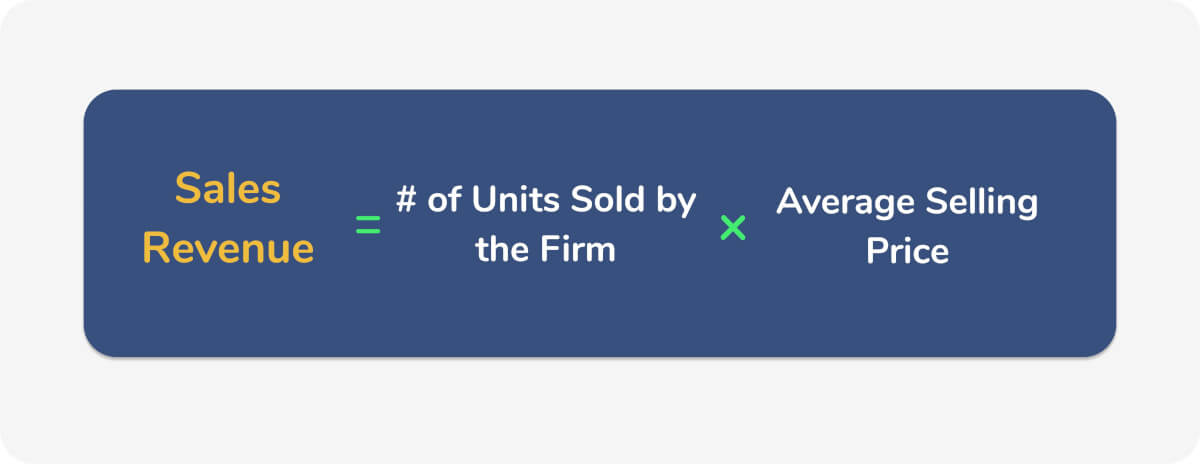Navigating Cross-Border Payments Amid Tariff Uncertainty
Over the past month, businesses around the world have been preparing for a new reality in global trade. As uncertainty grows surrounding tariff regulation...

Money made from the products or services sold by your business is an important indicator of its overall financial health. In this article, we'll explore the different methods for calculating sales revenue, what they tell you about your business' performance and some tips on how to maximise your profitability on sales revenue as an international business.
By definition, sales revenue is the money made from the successful sale of your products or services.
It's important to understand the key differences between ‘sales revenue' and ‘revenue’, as the two terms are often used interchangeably but indicate very different things.
| 💡 Reduce your international costs with Wise - multi-currency money management made easy. Find out how |
|---|
Sales revenue is at the top of income statement on the first line. It's one of the first starting points for calculating all other financial performance metrics including gross profit, operating income, and net profit.
All profitability ratios are expressed as a percentage of sales revenues, so a true and accurate picture is key to ensuring that performance measurement is done correctly.
Sales revenue is also one of the most important numbers used in forecasting. By looking at historical trends of sales revenue growth, small business owners can get a clearer picture of what the future could look like.
The sales revenue forecast impacts several other items on the income statement as well as many expenses including the cost of goods sold and other general administrative costs which are all expressed as a percentage of sales revenue.
Given the above applications and uses of sales revenue in financial statement analysis and forecasting, it is evident that sales revenue is the pivot around which the income statement is built, and P&L(profit and loss) is calculated.
The formula for sales revenue is relatively simple to calculate. At its core, sales revenue generated boils down to the average price that customers are willing to pay for a product or service multiplied by the number of units they are willing to buy. This is illustrated as below:

This formula is easy to calculate when a firm only has one product. However, it becomes progressively tougher when incremental products and services are added.
For companies with a product portfolio of 2 or more products, the individual sale price of each unit needs to be calculated to determine sales revenue.
An example is provided as below:
Imagine Magical Toys, a toy manufacturer that sells 2 products (Product A and Product B) in the same market. In one year:
The calculation would be as follows:
Total Sales Revenue = Product A Revenue + Product B Revenue
To find the revenue of each product, we use the formula above:
Total Sales Revenue is therefore: £80,000 + £72,000 = £152,000.
If your business operates across international borders and uses different currencies, there are additional things to consider from both sales and expenses to in order to accurately calculate revenue from sales.
While these costs are often significant, there are other smaller costs that may not be as distinct, but play just as big of a role in adding to overall costs when expanding into foreign jurisdictions. Some of these not-so-obvious costs are:
Luckily, there is a solution! A Wise multi-currency account can streamline your international accounting and financial management. With the versatility that the account offers, you can manage 10 currencies under one account, thus reducing overhead costs when consolidating funds in different currencies.
This becomes especially important as you scale and enter new markets. Increased complexity usually brings increased costs. However, with Wise businesses can generate meaningful, recurring cost savings on the often unseen costs of expansion into new territories.
To end off, let’s discuss some ways that you can bolster your international business' sales revenue:
*Please see terms of use and product availability for your region or visit Wise fees and pricing for the most up to date pricing and fee information.
This publication is provided for general information purposes and does not constitute legal, tax or other professional advice from Wise Payments Limited or its subsidiaries and its affiliates, and it is not intended as a substitute for obtaining advice from a financial advisor or any other professional.
We make no representations, warranties or guarantees, whether expressed or implied, that the content in the publication is accurate, complete or up to date.

Over the past month, businesses around the world have been preparing for a new reality in global trade. As uncertainty grows surrounding tariff regulation...

75% of consumers and SMEs seek out alternative cross-border payment providers beyond their primary bank - now is the time for banks to modernise offerings.

Discover why agile partnerships are trumping complex, costly global payments infrastructure builds for banks like yours.

Can you use Payoneer in Nigeria? Find out here in our essential guide for UK businesses, covering everything you need to know.

Can you use Payoneer in the UK? Find out here in our essential guide for UK businesses, covering everything you need to know.

Can you use Payoneer in Argentina? Find out here in our essential guide for UK businesses, covering everything you need to know.